Drum Kit Buying Guide For Complete Beginners
Acoustic vs Electric, What To Avoid & Recommended Kits
This guide aims to provide a decent overview of what to look for & what to avoid when buying either an electronic or acoustic drum kit.
If you still have questions or have seen a kit advertised online that you were considering purchasing, feel free to contact me.
Table of Contents
"Buy cheap, buy twice"
Buy the best kit that you can afford. By all means, look for a good deal but if you buy a cheap kit, you’ll end up wanting to upgrade a lot sooner than if you’d bought a mid-range or professional-level one. Similarly, if you decide drumming isn’t for you or don’t have the time anymore and you try sell your drums, a higher end kit will be more in demand and will sell for a better price due to retaining more of its value.
A cheap kit from an unknown brand that was inexpensive when new will be more difficult to sell – there’s not a big market for second-hand Argos kits!
So, whether you decide on an electronic or an acoustic kit, buying a more expensive one now will save you money in the long run.
Go Second Hand!
Save money by buying second hand. Try to go for at least a mid-range kit from a reputable drum brand. Places like eBay, Gumtree & the Facebook Marketplace are great places to begin searching. Look for damage and anything that’s broken. Stands, heads, cymbals, pedals, etc can be easily replaced but damage to the actual shells can be more problematic as can tension rods that don’t tighten or are cross threaded.
Acoustic vs Electric Drum Kit
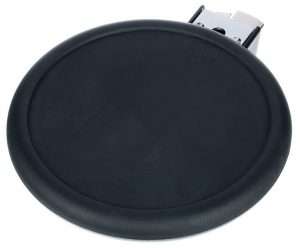
No matter how technologically advanced electric kits get, for many drummers, nothing beats playing a real acoustic kit – which is also what you’d most likely be playing on in a live band/gigging situation.
However, electric kits have their advantages over acoustic kits as they often come with different built-in fun, interesting, and inspiring drum sounds. A metronome and other useful practice tools such as easily being able to record yourself playing are often also included.
Electric kits tend to come in two basic types: mesh heads or rubber pads. Mesh heads supposedly feel more like an acoustic kit but are usually only featured on more premium level kits whereas rubber pads are cheaper, slightly louder, and have more of a bouncy feel than an acoustic kit.
Keep in mind that both mesh heads and rubber pads can be plugged into most modules so the ability to upgrade from rubber to mesh without buying a whole new kit is always a possibility.
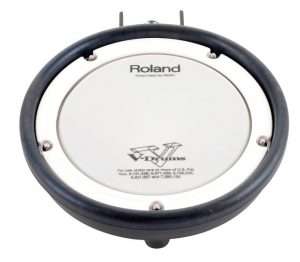
As well as taking up less floor space than their acoustic counterparts, the main selling point of electric kits for many buyers is how much quieter they tend to be. With an electric kit, you can plug in headphones and play to your heart’s desire with only the light sounds of rubber or mesh being heard by anyone nearby.
Whilst a very useful home practice tool, when you play an electronic pad, you’re using pressure to trigger a pre-made sound rather than sending vibrations through a physical object as you would when playing on an acoustic kit. This can potentially trick a student into thinking they’re a better player than they are because it can be easy to overlook vital technical playing elements such as touch and tone – which don’t apply when on an electric kit.
Acoustic Drum Kit
Pros:
• Replicates real-life gigging situations
• Easier to set-up and get playing
• Fun to make a lot of noise on!
Cons:
• Loud
• Take up a lot of room
Electronic Drum Kit
Pros:
• Quieter
• Take up less space
• Different kit sounds and practice tools built in
Cons:
• Entry level kits are more expensive
• Not as exciting to play as an acoustic!
What determines the price?
Acoustic Drum Kit Prices
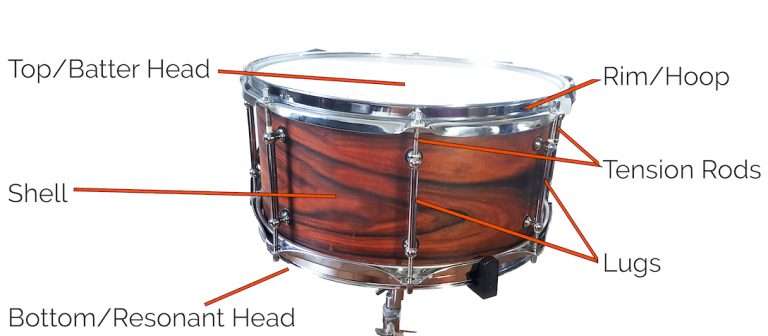
There are many variables that determine the price of a kit but generally, cheaper acoustic kits tend to be constructed from Poplar (it’s a species of wood!) whereas mid-range and professional level kits are likely to be made from higher quality woods such as Maple, Birch, Mahogany, Walnut etc. all of which have their own unique tonal qualities. However, a kit made from Poplar can still sound great with good quality heads that have been tuned well. It’s also worth remembering that the room the kit is in and the playing technique of the drummer affects the sound more than the wood type.
Most kits will either come with terrible cymbals that sound like dustbin lids which you’ll want to upgrade as soon as possible if you plan on playing live or; won’t have any cymbals at all (often called a “shell-pack”) so keep that in mind when budgeting and purchasing. In fact, when going for quality, it’s almost worth thinking of cymbals as a separate purchase to the actual drum-kit.
Second-hand kits may come with a set of cymbals (and hopefully stands to put them on!) but be sure to fully check the listing.
The number of drums included can also affect the price. Some higher end kits and the aforementioned “shell-packs” sometimes don’t include a snare drum. Also, be aware that when a listing refers to the amount of “pieces”, it’s talking about the number of drums only. The kit could have fifty cymbals and four drums but would still only be a “four-piece”.
Whilst the size of the drums don’t tend to affect the overall price too much, it is worth considering the height of the person who’ll be primarily playing the kit. Acoustic drums are almost always measured in inches as diameter by depth. A drum that’s 10×8 would be ten inches in diameter and eight inches deep. Smaller diameter drums tend to be higher pitched and less “boomy” but if you’re purchasing for a child, a 24″ bass drum with 13″ deep toms will most likely be too big for them to play. An 18″ or 20″ bass drum with toms that are 8″ – 10″ deep would be more suited.
Electronic Drum Kit Prices
With electric kits, look for ones that have four to 5 drum pads (bass, snare, toms) and three cymbal pads (hi-hat, crash, and ride).
Also, to replicate the feel of an acoustic drum set, look for an e-kit that has a physical bass drum pedal that hits a pad, rather than an electronic pedal that you simply stamp on (pictured below)
Beyond that, the price is mostly based on the module. Some kits may come with mesh heads, more realistic cymbal pads, or stronger hardware but the quality of the “brain” (where all the sounds are stored) is where the bulk of the price tag comes from. As the price goes up, the module will offer extra features such as the ability to adjust the tone of different parts of the kit, recording capabilities, more built-in sounds or even a way to add your own.
When buying; check if all cables, pedals, and necessary screws are supplied as well as an amp (unless you just want to use headphones)
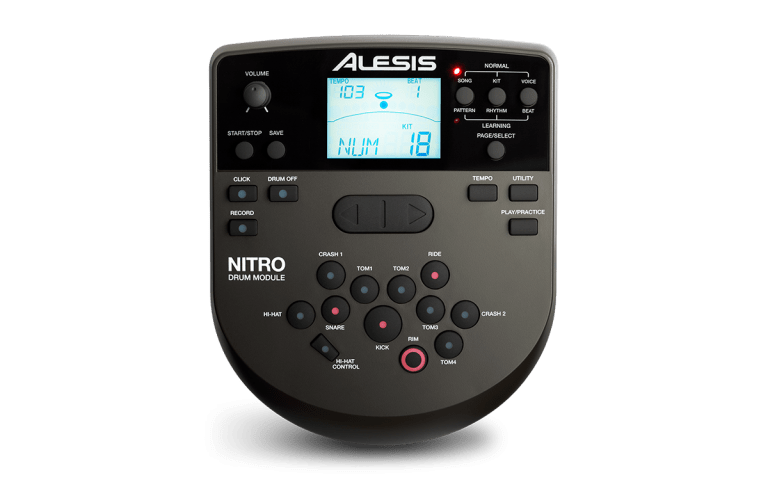
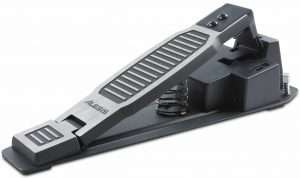
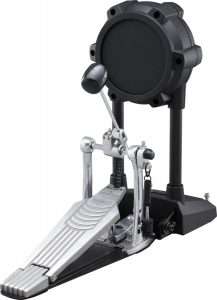
Recommended Electronic
Drum Kits
Most would consider Roland and Yamaha to be the leading brands of electric drums kits with Alesis close behind. Almost all kits made by any of these three companies are going to be good.
With Roland kits, the higher the number, the more premium it is. For example, the TD1 is the entry level kit whilst the TD50 is the top of the range, bank-account-ruining kit.
Roland TD3 is a great starter kit that would last many years. They can be found for around £200 – £300 second hand.
If you decide to go with Yamaha, the DTXPLORER is an excellent kit that you can find for around £200 – £300 second hand.
The Alesis Nitro kits can be found for around £300 brand new and have many features that you wouldn’t expect to find at that price point.
Recommended Acoustic
Drum Kits
For acoustic kits, almost anything made by Pearl, Tama, Mapex, Gretsch, Yamaha, Sonor, Ludwig, Natal, and Drum Workshop will be of good quality.
The Pearl Export is one of the best selling acoustic kits of all time – it’s a great kit to start out on and will easily hold up in live gigging situations. They generally cost £500 – £600 new but can be found in abundance for £150 – £300 second hand.
Again, many second-hand kits include a set of cymbals which you may eventually want to upgrade if you planned on playing live a lot.
If you still have questions or have seen a kit advertised online that you were considering purchasing and would like some advice, feel free to contact me or reach out via Instagram.